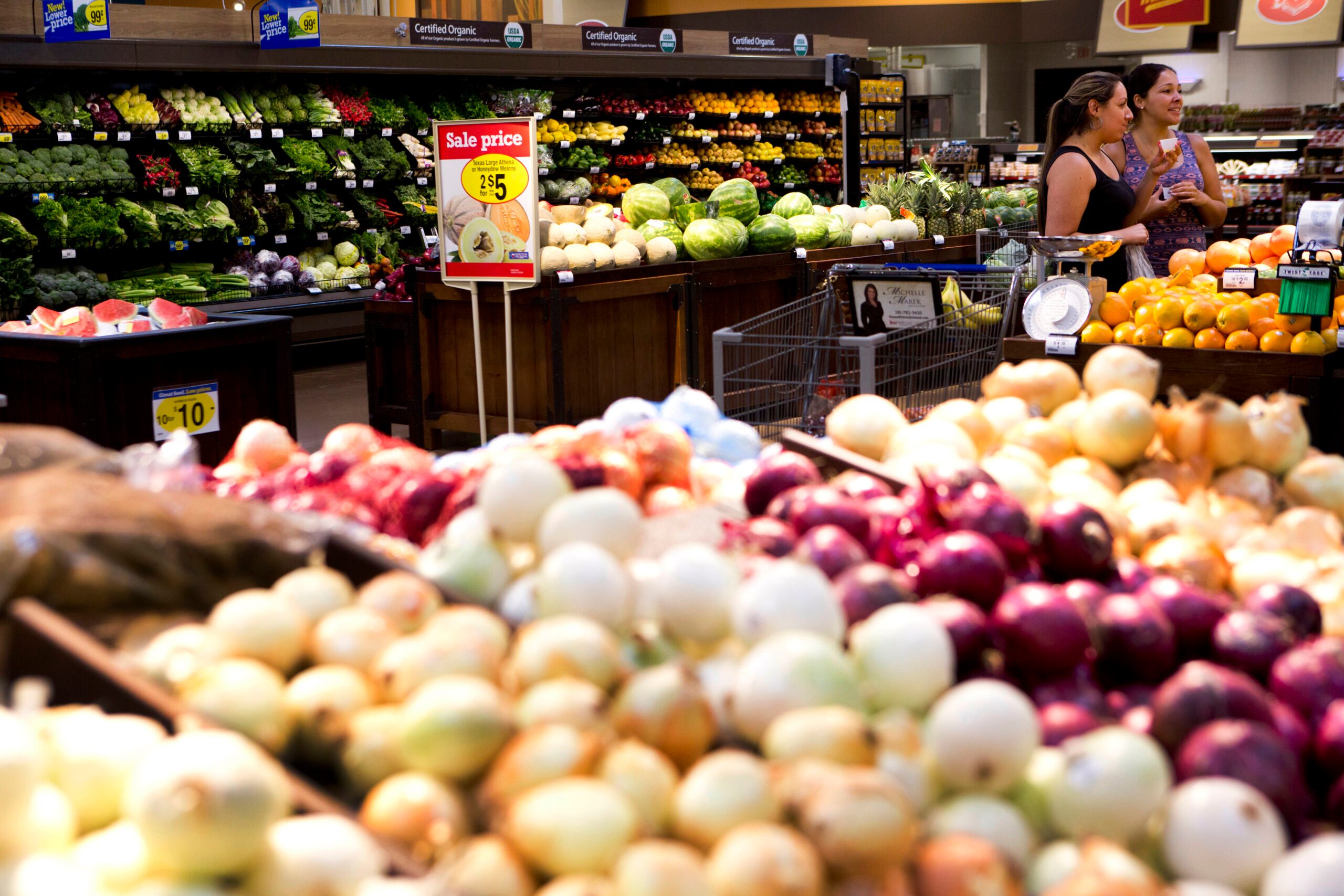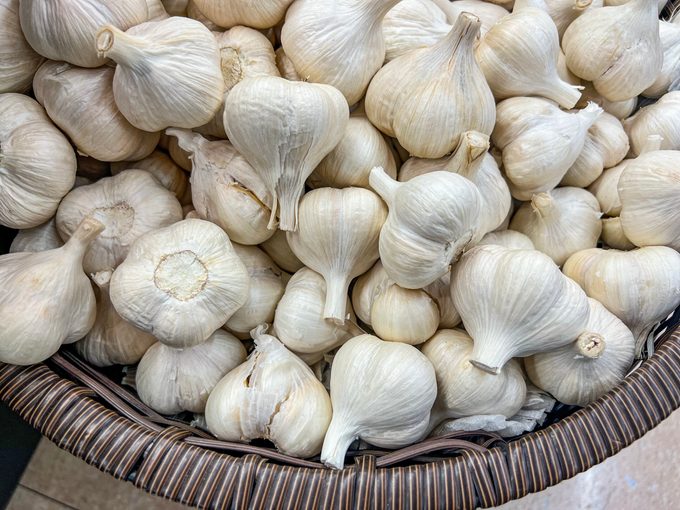Your grocery bill could be going up (again) in the coming year. Here's what you need to know about the flavorful kitchen staple that might be getting a price hike.

Here’s Why This Cooking Staple May Cost You More Very Soon

Deciding what to buy at your local supermarket boils down to personal tastes (and possibly finicky eaters), yet a number of global factors can impact your bill. Grocery prices have risen 22% in the past four years, thanks to things like inflation, the COVID-19 pandemic and the war in Ukraine, plus the fact that food producers and manufacturers need to earn money. All that distills down to you, making your grocery bill higher than it used to be.
Well, we have some bad news for you: In 2025, grocery prices may rise again, especially when it comes to kitchen staples that the United States imports from other countries. To find out which beloved food is likely to affect grocery bills, we turned to a food economist. Here’s everything you need to know—and how to prepare.
Get Reader’s Digest’s Read Up newsletter for more food news, money, humor, travel, tech and fun facts all week long.
Which cooking staple will likely cost more in 2025?

The price of garlic will most likely be going up within the next year. “Not only that, but prices of prepared foods, foods processed with garlic, garlic products like dried garlic powder and food away from home would also get more expensive,” says Amelia Finaret, PhD, RDN, a food economist and associate professor of global health studies at Allegheny College in Pennsylvania.
That could also translate to increased prices for everything from garlic-flavored hummus to the garlicky pasta with marinara sauce from your favorite Italian restaurant.
Why might garlic become more expensive?
Blame expected tariffs, which are taxes imposed by the government on goods imported from other countries. The tariffs, which President-elect Donald Trump has pledged to impose as soon as he gets into office, don’t directly tax U.S. citizens. But companies tend to pass on extra costs to consumers instead of allowing tariffs to cut into profits.
“When a tariff is imposed, the price that domestic consumers pay increases by the amount of the tariff,” explains Finaret. “The world price stays the same, but consumers in the U.S. are subject to that additional 10%, 25% or 60% cost, which will just be passed on to them by the company paying the tariff.”
Consumers will feel the pinch when buying garlic, specifically, because a lot of the garlic consumed in the United States comes from China, according to the USDA Economic Research Service. “We get 85% of imported dried garlic and 45% of imported fresh or chilled garlic from China, which is one of the countries that may face tariffs,” says Finaret. After China, another 18% of our fresh or chilled garlic comes from Mexico, another country that Trump has promised to impose tariffs on.
How much of a price increase are we talking?
It’s difficult to say because there are still many unknowns. Two of the biggest questions concern how much the tariff will be—it could be anywhere from 10% to 100% of the price of garlic—and how much of it the garlic importers will pay.
“It is possible that garlic importers will absorb some of the cost of the tariff if they can,” Finaret says, noting that they might not be able to if they work on thin margins. “For example, they might absorb 10% and pass 15% on to consumers if the tariff is 25%.”
While that’s impossible to know at this point, it’s not something to be optimistic about, according to Finaret. “I think it is more likely that importers will decide to not absorb very much of the cost of the tariff—meaning, I think they will pass on most of the cost to U.S. consumers and then sell to countries without tariffs,” she says. “It would be a relatively easy switch to sell to countries without tariffs because the market for garlic is global and people everywhere eat garlic.”
OK, but practically speaking, how might a garlic tariff affect your pocketbook? Let’s say we’re dealing with a 25% tariff, and we’ll assume the entire 25% gets passed to the consumer. According to the USDA, the average American consumes roughly two pounds of garlic per year, so a family of five would be buying around 10 pounds of garlic every year, or one head of fresh garlic every week. Assuming that one head of garlic costs about 70 cents, you could expect to spend an extra $10 per year on just heads of garlic at the grocery store.
“But the problem with this is that the garlic price increases will also affect many other foods that people buy,” Finaret says. “This is harder to calculate the effect of because garlic is an ingredient in so many things. So the likely impact on actual pocketbooks [of just tariffs on garlic] would be more than $10 per person per year.”
Can production just switch to America?
Possibly, but it’s not guaranteed to help American consumers save money on groceries. And it could take a while. “Right now, farmers in the U.S. produce about 400 million pounds of garlic per year,” says Finaret. “So we currently import about 40% of our garlic from overseas.”
That would mean farmers in the United States would need to nearly double their garlic production, which will take a lot of time, effort and trade-offs for producers. “Garlic planted in the fall won’t be ready to harvest for about eight to 10 months, depending on the climate,” she explains. “Farms that are not currently set up to grow garlic would need to take time to transition to this, and that would mean they could be producing less of other things. In addition, garlic is a pretty demanding crop in terms of fertilizer, so if it were taking the place of a crop that didn’t need as much fertilizer, it could increase the environmental impact of growing garlic.”
Currently, over 90% of the garlic grown in the United States is produced in California, with Christopher Ranch in Gilroy, California, responsible for more than half of it, according to the California Farmland Trust. Garlic plants are hardy when it comes to growing temperature, but they do require a lot of sun.
Plus—and this is a big consideration—if tariffs are put in place, the price of domestically produced garlic will also likely go up. “Consumers won’t be able to shift to domestic producers and buy garlic for a lower price because domestic producers will respond to the higher import price by increasing their domestic production,” Finaret says. “The new price (which equals the original ‘world’ price of garlic plus the tariff) will apply to everyone—not just imported garlic.”
How can you prepare for this possible price increase?
While it’s difficult to prepare for the possible price increases on prepared foods that contain garlic, you could stock up on other products. Garlic powder will last up to four years, while dried minced garlic is good for three. You can also freeze garlic in virtually any form, from raw bulbs or individual cloves to chopped, minced or roasted, and it will be good for three to six months.
That said, whether you need to prepare at all depends on a number of factors. “The impact on pocketbooks will depend on how much your family spends on garlic right now,” Finaret notes. “Consumers with lower incomes and consumers who eat more garlic will be most affected by a tariff on garlic imports.”
What other foods might also be affected?
Will other cooking staples be affected? “Yes, indeed,” says Finaret. Any foods that the United States imports from other countries that are subjected to tariffs will get more expensive. If tariffs are put in place, expect to spend more money on food items such as:
- Broccoli: 92% of fresh and 74% of frozen broccoli comes from Mexico.
- Carrots: 45% of fresh carrots come from Mexico, and 42% come from Canada.
- Celery: 93% of fresh celery comes from Mexico.
- Lettuce: 90% of fresh lettuce comes from Mexico.
- Onions: 72% of fresh onions come from Mexico.
The bottom line
Garlic prices are likely to go up, as will the prices of some other staple ingredients in your kitchen. But because these foods are not currently very expensive, the increases that tariffs will cause won’t be huge. However, if you and your family consume a lot of garlic and products that contain garlic, you should be prepared to feel the difference.
About the expert
|
Why trust us
At Reader’s Digest, we’re committed to producing high-quality content by writers with expertise and experience in their field in consultation with relevant, qualified experts. We rely on reputable primary sources, including government and professional organizations and academic institutions as well as our writers’ personal experiences where appropriate. We verify all facts and data, back them with credible sourcing and revisit them over time to ensure they remain accurate and up to date. Read more about our team, our contributors and our editorial policies.
Sources:
- Amelia Finaret, PhD, RDN, associate professor of global health studies at Allegheny College; email interview, Dec. 4–8, 2024
- AP: “Trump’s threat to impose tariffs could raise prices for consumers, colliding with promise for relief”
- USDA Economic Research Service: “Data by Commodity – Imports and Exports”
- USDA Economic Research Service: “Food Availability (Per Capita) Data System”
- USDA National Agricultural Statistics Service: “Vegetables 2023 Summary”
- California Farmland Trust: “Garlic Lovers Unite”























